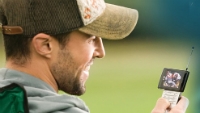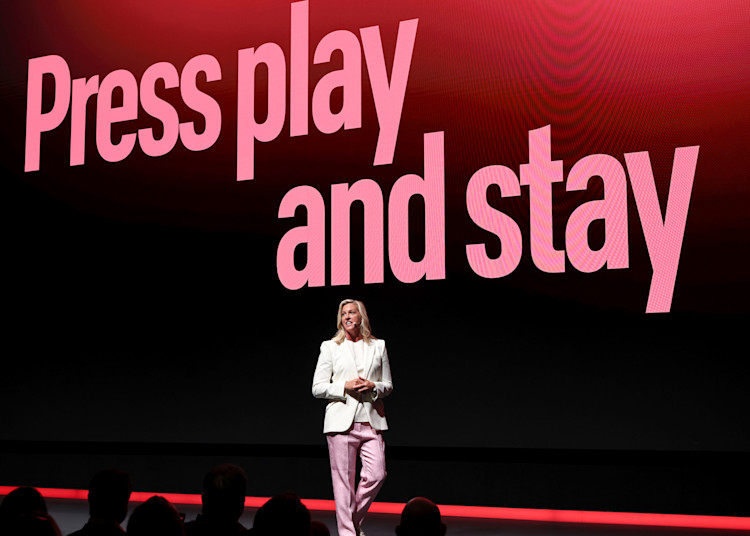Broadcasters push mobile TV at CES

Citing recent trends that show viewers are turning to mobile devices to watch video in a big way, over-the-air television broadcasters used CES to promote their new mobile digital television service.
With the A/153 ATSC Mobile Digital Television (DTV) standard now in place, dozens of manufacturers showed devices with screens measuring 5in to 8in that can receive the over-the-air signals. LG Mobile Digital Television, for example, showed a device with a 7in screen and built-in DVD player, as well as prototype mobile phones.
The NAB partnered with the Open Mobile Video Coalition (OMVC), a group of 800 stations that has been promoting mobile DTV, and Sezmi, a startup that hopes to sell a new pay-TV service based on both DTV transmission and Internet video. At CES the group stated that nearly four in 10 U.S. homes will have access to free mobile DTV programming as part of a rollout that eventually will include some 800 stations and more than 100 million homes.
The mobile television initiative comes as the NAB is embroiled in a major battle to convince the FCC and Congress that broadcasters should retain their digital spectrum and not be forced to give up some or all of it for applications such as wireless broadband access.
New services such as mobile television and multicasting services like Sezmi have been used touted by the NAB as vital uses for the digital spectrum alongside broadcasters’ existing high and standard-definition programming.
“Broadcasters are charging into 2010 working with innovative organizations like Sezmi and the Open Mobile Video Coalition that improve the quality, delivery and accessibility of broadcast content,” said Gordon Smith, NAB’s president. “Such services represent the vibrant future of broadcast-based services that will greatly benefit the public, and cannot be replicated by broadband. Their foundation is the digital television spectrum.”
At CES, the broadcasters showed a variety of products — from laptop dongles to car entertainment systems. So far, only about 30 TV stations are transmitting signals in the United States. Each must install new equipment to transmit the signals at a cost of up to $150,000.
Get the TV Tech Newsletter
The professional video industry's #1 source for news, trends and product and tech information. Sign up below.
At the show, Harris will support over-the-air broadcasts for Las Vegas-market digital TV stations KLAS-DT, a CBS affiliate owned by Landmark Communications, and KVMY-DT, a MyNetworkTV affiliate owned by Sinclair Broadcast Group. Harris will integrate its MPH ATSC Mobile DTV platform with each broadcaster’s main transmitter to deliver the ATSC mobile DTV streams. Demonstrations can be seen at the Open Mobile Video Coalition (OMVC) Pavilion and at the stands of various receiver manufacturers.
Of course, broadcasters have come late to mobile telephony market. The major wireless carriers already offer a paid television service through either Flo TV or MobiTV. Since the wireless carriers purchase mobile phones to resell to end users, they are not likely to sell units that offer a free competitor. So far, the broadcasters have not announced the support of a single mobile carrier.
